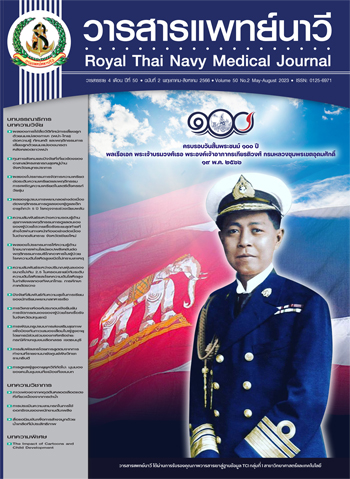Association of Annual Fine Particulate Matter (PM2.5) Level with Blood Pressure and Hypertension among The Royal Thai Army Personnel: A Cross-sectional Study
Main Article Content
Abstract
In the past, there have been studies on the effects of fine particulate matter or PM2.5 exposure on hypertension but only a few studies were done in Southeast Asia. The objective of this cross-sectional study was to determine the relationship between annual PM2.5 with blood pressure and hypertension among Thai Army personnel. Data was analyzed by multilevel generalized linear model and multilevel binary logistic regression model. There were a total of 89,641 military personnel who were included in the analysis. Result showed that the prevalence of hypertension was 23.1%. After considering age, sex, health behaviors, other air pollutants and meteorological characteristics, annual PM2.5 was statisticaly significantly associated with the prevalence of hypertension and blood pressure levels but there was no dose-response pattern. Annual PM2.5 levels at the 4th quartile were associated with the greatest increase in the prevalence of hypertension (OR 1.44, 95% CI = 1.20 - 1.72) and systolic blood pressure (ß 1.05 mmHg, 95% CI = 0.33 - 1.77), and annual PM2.5 levels at the 2nd quartile were associated with the greatest increase in diastolic blood pressure (ß 0.80 mmHg, 95% CI = 0.43 - 1.18). In conclusion, this study can provide supporting evidence that long-term exposure to PM2.5 is associated with increased blood pressure and hypertension among Thai Army personnel.
Article Details

This work is licensed under a Creative Commons Attribution-NonCommercial-NoDerivatives 4.0 International License.

